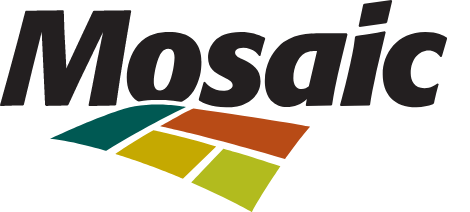
Mosaic Announces New Environmental Net Zero Targets
Sustainably growing more food depends on fertilizers, which are responsible for producing up to 60% of all crop yields. By 2050, the global population is expected to reach 9.8 billion people, and experts estimate agricultural productivity must increase to enable farmers to produce enough crops. Fertilizers are critical to doing that without increasing global emissions or contributing to deforestation and poverty.
So, we are broadening our commitment to environmental stewardship by announcing targets to achieve net-zero greenhouse gas emissions in Florida, U.S. by 2030 and companywide by 2040. To achieve these targets, we will emphasize opportunities to reduce Scope 1 and Scope 2 emissions from our operations. We believe this is a critical step in managing our own most pressing physical and transition climate risks—like the threats of carbon pricing and increasingly severe weather—and as a way to be a good steward of the environment, while contributing to a global sustainable food future.
“Environmental responsibility is a defining issue of our time. Mosaic’s net-zero commitment and clear pathway to achieving it demonstrates one of the ways we are doing our part to limit the impacts of climate change and contribute positively to society,” said Mosaic President and CEO Joc O’Rourke.
Mosaic’s significant landholdings position us to leverage carbon removal through nature-based solutions. As a result—and factoring in the improvements we can make to our own operations—we will not pursue carbon offset credits at this time.
Our Scope 1 emissions are generated from burning fuels and natural gas at our facilities. Our Scope 2 emissions are generated by purchasing electricity from the grid. Less than 20% of energy from the grid is classified as renewable, but we are engaging utilities in discussions about our mutual decarbonization efforts. Indirect emissions are offset by the generation of power from emissions-free waste heat in the U.S. and Brazil. Our Scope 3 emissions are generated downstream from the application of ammoniated crop nutrient products in the form of N2O, and upstream from purchased goods—namely ammonia.
Our net zero targets are in addition to the wide range of 2025 ESG Performance Targets set last year, including to reduce companywide GHG emissions and freshwater use per unit of production by 20%. In 2020, Mosaic made progress toward both goals, achieving a 10% reduction in GHG emissions and an 18% reduction in freshwater use per unit of production since the baseline was set in 2020.* Though not represented in a formal target, we are also addressing Scope 3 emissions by engaging suppliers, partnering in the development of innovative agricultural technologies and investing in a pipeline of solutions that could ultimately reduce emissions at the farm level.
To better understand Mosaic’s approach to acting responsibly and to review the company’s commitments to deforestation and climate change, visit mosaicco.com/our-responsibility.
*In 2020, we saw a significant reduction in freshwater use, thanks to efforts across our business to minimize our impact – and, in part, due to the nonlinear and cyclical nature of water use. We expect our performance to increase somewhat next year. We are on track to meet our 2025 targets.
